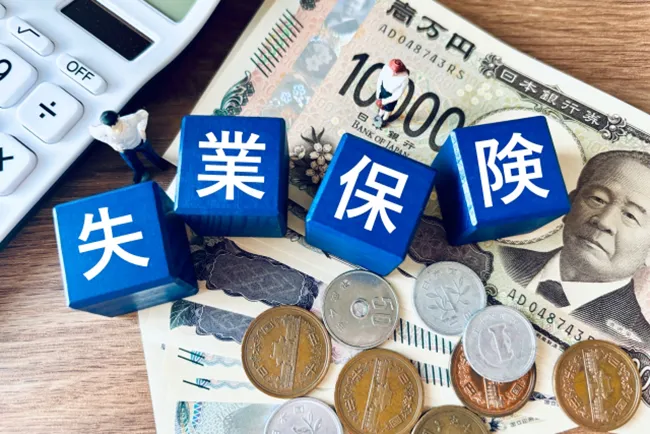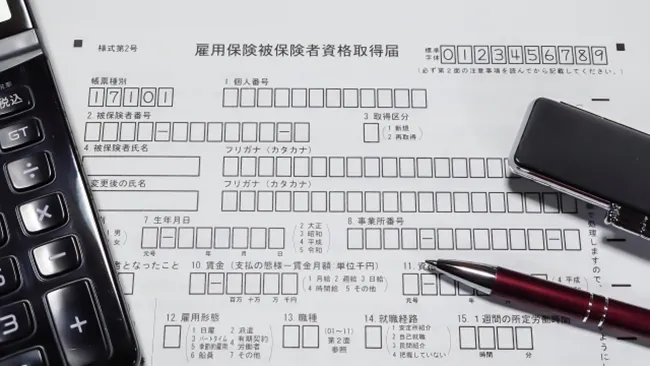If you are living and working in Japan as a foreign national, you might wonder whether you’re eligible for unemployment benefits when your job ends, how much you could receive, and how to go about applying. This article explains the key aspects of the Japanese unemployment-insurance system (commonly the “basic allowance” under the Employment Insurance (Japan)) in a way that aims to be practical, detailed and readable. We cover the overview of the system, eligibility (including for non-Japanese workers), how to apply, how much you can receive, and other important notes.
1. What is the unemployment insurance system in Japan?

In Japan, the unemployment insurance benefit is part of the Employment Insurance scheme administered by the Hello Work offices (public employment security offices) under the Ministry of Health, Labour and Welfare (MHLW).
The “basic allowance” (基本手当) is paid to those insured under employment insurance who become unemployed and are actively looking for work. 都道府県労働局所在地一覧+1
Essentially, its aims are:
- To support everyday living during the job-search period.
- To encourage re-employment as soon as possible. 厚生労働省
- It is not a long-term welfare payment but a temporary support while you seek new work.
Your employer (and you) pay into the Employment Insurance scheme while you are working (if you are eligible), and if you leave work under certain conditions, you may apply for this benefit.
2. Who is eligible — including foreign nationals?

Basic eligibility requirements
To receive benefits, you generally must satisfy:
- You were covered by employment insurance (i.e., you were enrolled as an insured person).
- You lost your job (by contract expiry, dismissal, etc.) or otherwise left employment and you are able and willing to work and actively seeking employment.
- You apply at your local Hello Work office and attend required briefing/training.
Contribution period (how long you must have paid into the system)
- If you leave employment for company reasons (bankruptcy, dismissal, contract non-renewal), you must have been insured for 6 months or more within the year before leaving.
- For typical resignations (personal reasons) you normally need to have been insured for at least 12 months within the previous 2 years.
Foreign nationals
Yes — foreign nationals who are working in Japan under a valid status of residence and whose employment is subject to employment insurance are in principle eligible, provided they meet the same conditions as Japanese nationals.
However, a few caveats apply:
- If you are working very few hours (e.g., less than 20 hours per week) or not expected to work more than 31 days, you may not be insured.
- If your residence status does not allow full employment (e.g., certain student visas, short-stay, or working-holiday) you may not be covered.
- You must still meet the other eligibility criteria (insured period, actively seeking work, etc.).
Important note on residence status / visa
If you are a foreign worker and you lose your job, be aware that your visa/residence status may require you to find new employment or change your status. Applying for unemployment benefits does not automatically correct a visa status issue. You should check your immigration status and ensure you remain eligible to stay in Japan. (See general guidance from the “foreign nationals” checklist by MHLW. 厚生労働省 )
3. How much you can receive & how long

How much: calculation
The daily basic allowance is based roughly on your average daily wage in the six months before your job ended, divided by 180, then multiplied by a benefit rate (typically about 50%-80%).
In more detail:
- First calculate your “daily wage” (賃金日額) = (Total wages over last 6 months) ÷ 180.
- Then your daily allowance amount = about 50%-80% of that daily wage (for ages 60-64 the rate is about 45%-80%).
- There are minimum and maximum limits. For example, as of August 2022 the maximum daily allowance was ¥8,355 and the minimum was ¥2,125 (for insured persons under 60). hataraku.metro.tokyo.lg.jp
How many days you can receive
The number of payable days depends on your age, the reason you left the job and your total insured period. For example:
- If you left your job due to personal reasons (resignation) you may receive benefits for 90-150 days typically.
- If you were dismissed or the company went bankrupt or contract not renewed you may receive benefits for up to 330 days or more in certain classes.
- Note: payments must begin within one year after your job separation.
When payment starts
- There is a “waiting period” of at least 7 days after you apply and are acknowledged as eligible. 厚生労働省
- If you left work for personal reasons, you may also be subject to a “benefit waiting/restriction period” (e.g., ~2 months) before payments start.
Example
Suppose you had total wages of ¥3,000,000 in the 6 months before separation. Then daily wage ≈ 3,000,000 ÷ 180 = ¥16,667. If your rate is 60%, then daily basic allowance ≈ ¥10,000 (but capped at the maximum). You might receive that amount for, say, 90 days (depending on your circumstances).
4. How to apply and what you need to do

Step-by-step
- On the day you become unemployed (or shortly thereafter), obtain from your employer the “Job separation certificate” (雇用保険被保険者離職票) and your employment insurance card (雇用保険被保険者証).
- Visit your local Hello Work office (in the prefecture of your residence) and submit the application for unemployment benefit. You’ll need to bring your residence card (for foreign nationals), My Number (or number notification), bank passbook etc.
- Attend the mandatory briefing/seminar that Hello Work sets for new claimants. Missing this can render you ineligible.
- Begin job search activities (you will usually be required to report your job-search status to Hello Work at regular intervals, often every 4 weeks) to maintain eligibility. 厚生労働省
- Once eligible, payments will be made into your designated bank account, typically every 4 weeks (covering the days you were certified as unemployed and actively job-seeking). 厚生労働省
What kind of job-search activity is required?

Hello Work generally requires proof of “actively seeking employment” to continue receiving benefits. This could include: submitting applications, attending interviews, undergoing vocational training, etc. Merely browsing listings may not suffice.
Documents you’ll typically need

- Job separation certificate (離職票)
- Employment insurance card
- Residence card and My Number (for foreign nationals)
- Two identical photographs (size ~3 cm × 2.5 cm)
- Bank passbook or cash card in your name
- Personal seal (hanko) or signature
5. Things foreign nationals should particularly watch

- Residence status / visa: If your status of residence requires employment (e.g., working visa) and you become unemployed, you must act quickly to secure new employment or change your status. Claiming unemployment benefits does not automatically solve a visa issue.
- Work hours / insurance coverage: If your job was part-time, short-term or under a visa that limits hours, you may not have been insured—or your insured period may not be long enough. 厚生労働省
- Language / documentation: Some Hello Work offices may have limited English support; prepare and bring all relevant documentation, and ask for English guidance if needed.
- Payment timing: If you leave a job and delay your application, you may lose some days of benefit eligibility. Applying earlier is usually better.
- Income tax / health insurance implications: If your allowance is relatively high, your dependent status under health insurance may be affected. For example, a document notes if your daily basic allowance is above ~¥3,612/day, dependent status may need to be cancelled.
- Leaving Japan: If you return to your home country or leave Japan soon after job termination, you may still apply for benefits, but your ability to stay in Japan and complete the job-search certification may be compromised. You should check with Hello Work and your immigration office.
- Voluntary resignation vs. employer-side redundancy: If you quit your job voluntarily without a “good reason”, you may be subject to the longer waiting period and possibly fewer benefit days.
6. Summary at a glance
Here is a table summarising the main points.
| Topic | Key Point |
|---|---|
| Eligibility | Must have been insured under employment insurance, unemployed, able & willing to work, actively seeking employment. |
| Contribution period | Typically 12 months in last 2 years, or 6 months for company-initiated job loss. |
| Amount of benefit | About 50-80% of average daily wage (up to a cap). |
| Duration of benefit | Depends on age, insured period, reason for job loss — e.g., 90-330 days typical. |
| Application process | Submit documents at Hello Work, attend briefing, show job-search activity each period. |
| Foreign nationals | Eligible if insured, meet conditions and hold valid residence status; check visa implications. |
7. Final tips & reminders

- Don’t assume you’re automatically eligible — check your insured period, reason for job loss, work hours and job-search status.
- Gather all documentation early — the separation certificate, your insurance card, bank account, residence card, My Number, and photos.
- If you were working part-time, or your visa did not allow full employment, ask Hello Work whether you were insured and whether you meet the insured period requirement.
- Apply as soon as possible after job separation — delaying may reduce how many days of benefit you can claim.
- Keep proof of job-search activities — attend counselling sessions, submit applications, keep records.
- If you’re a foreigner and your work visa situation changes (job loss, company closure, etc.), check with the immigration office about your status and how using unemployment benefits might interact with it.
- Remember: the benefit is there to support you while you seek new employment — not indefinitely. Make use of the vocational training and support services Hello Work offers.
Thanks for reading!
If you enjoy my posts, your support really motivates me ☕

